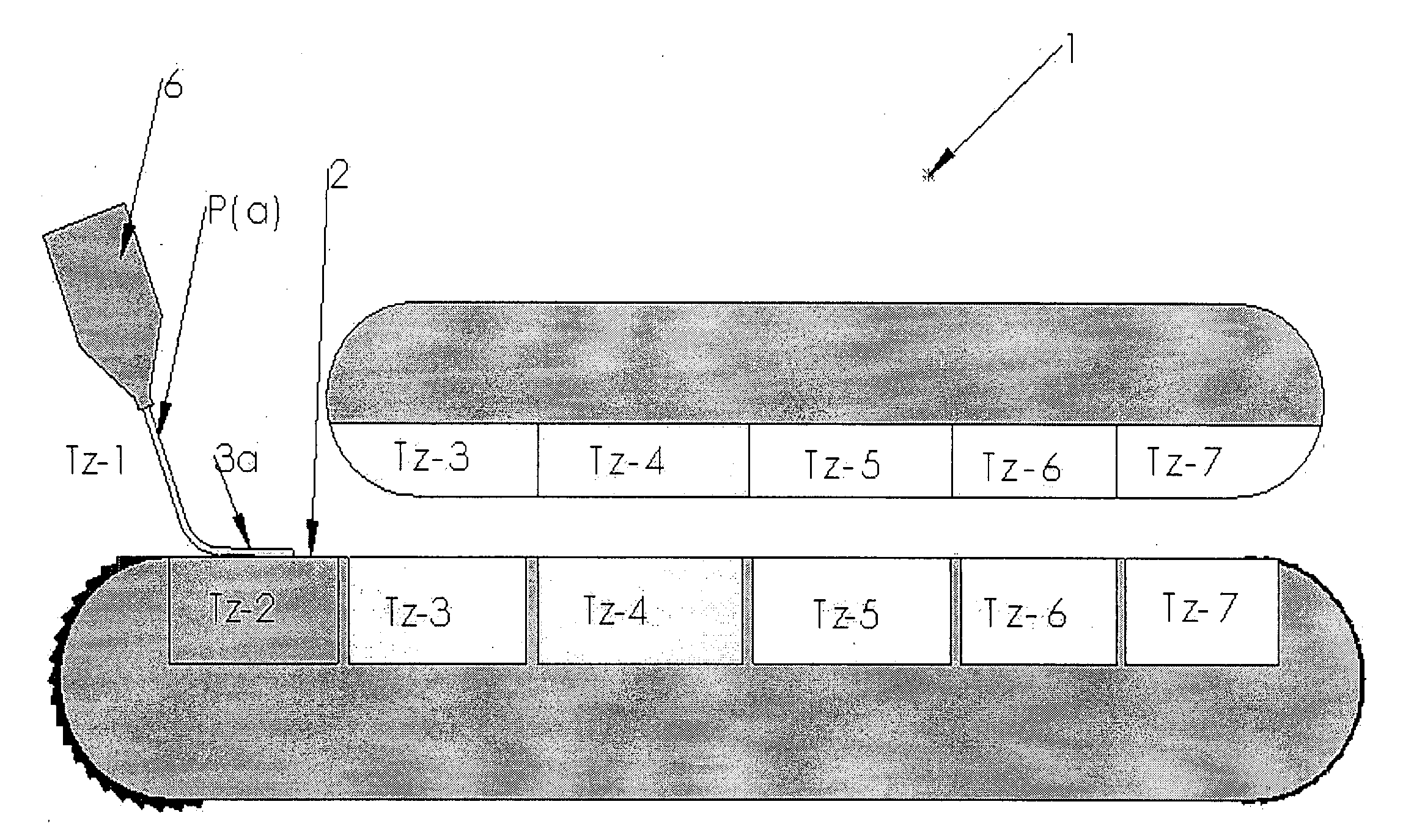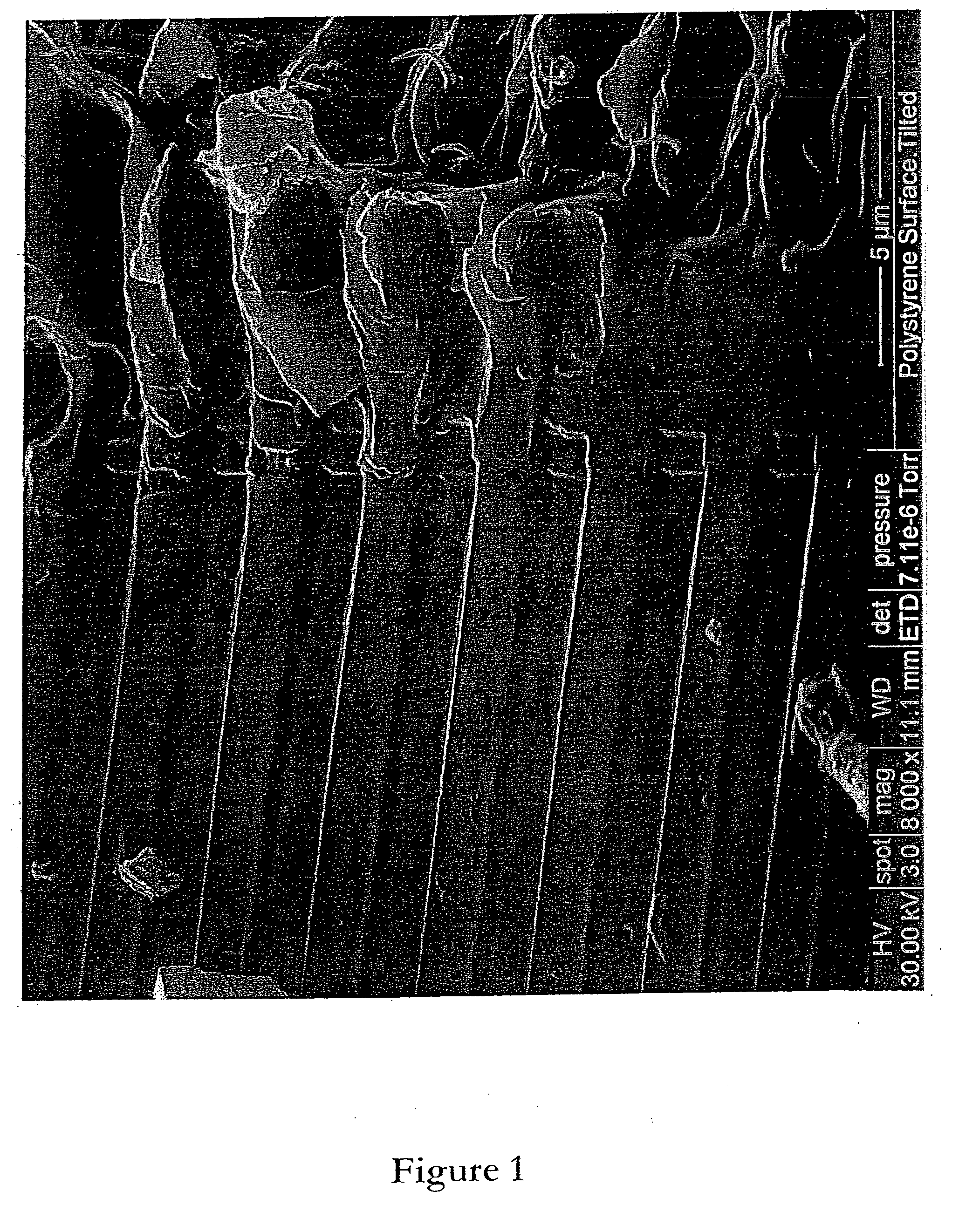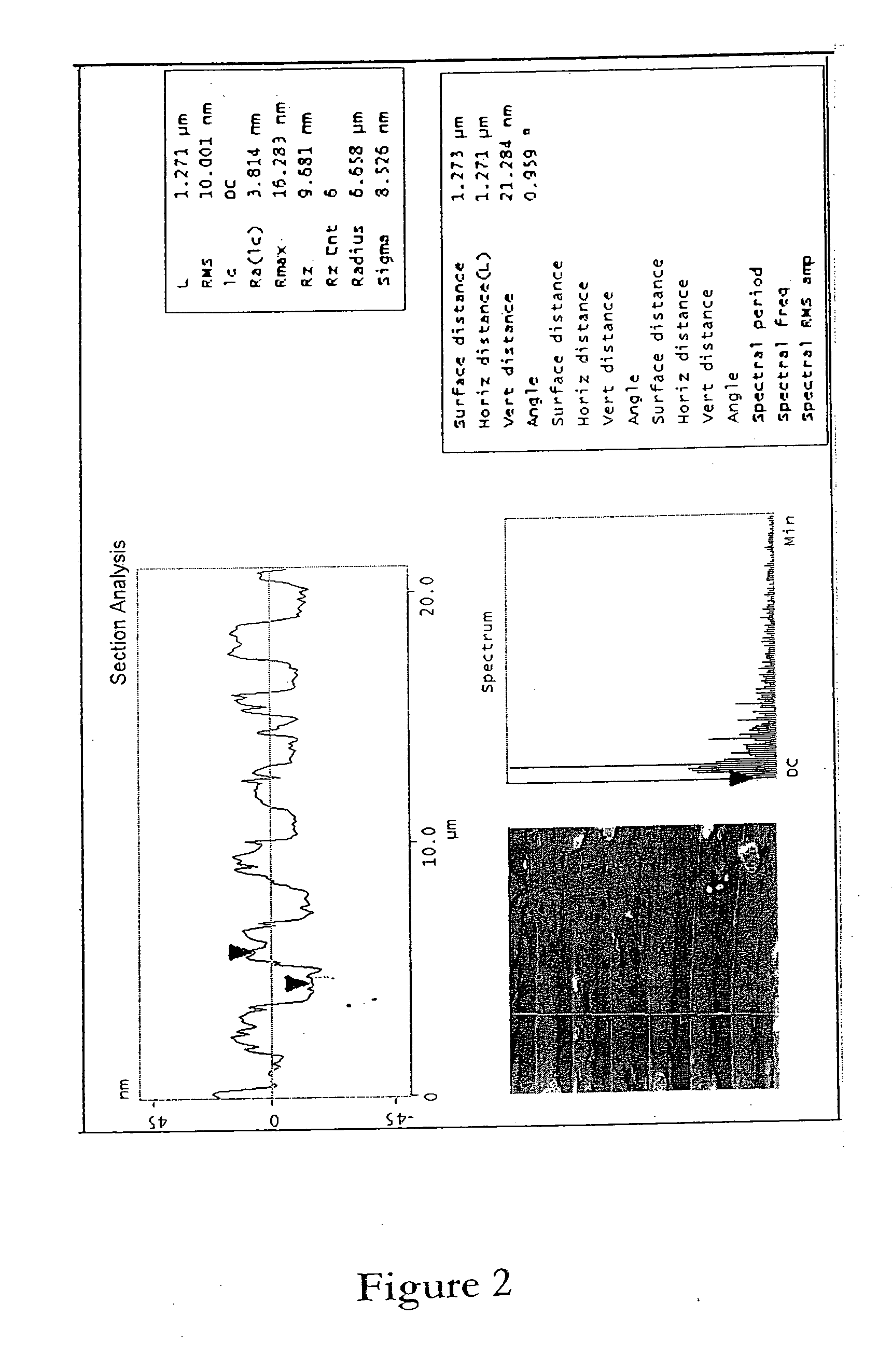Forming methods
a technology of forming methods and materials, applied in the field of forming methods, can solve the problems of mass production forming or fabricating of nanostructures or microstructures, challenges to existing forming techniques, subsequent deformation of imprinted or formed items or product surfaces, etc., and achieves the effect of shortening the cooling time, shortening the material depth, and speeding up the forming process
- Summary
- Abstract
- Description
- Claims
- Application Information
AI Technical Summary
Benefits of technology
Problems solved by technology
Method used
Image
Examples
example 1
[0272]Polystyrene is:[0273](i) heated and maintained at a temperature of 230° C.,[0274](ii) the heated polystyrene is transferred and applied to a surface of a continuous forming tool, such as the surface labelled 26 or 24 of PCT / NZ2006 / 000300 and formed according to the method of PCT / NZ2006 / 000301,[0275](iii) a pressure of between about 1 kg / cm2 to about 3 kg / cm2 is applied to the material on the surface,[0276](iv) pressure is released by separation of the forming surfaces, thereby releasing the item or product thus formed.
[0277]The product thus formed is that shown in FIG. 1 with product analysis shown in FIG. 2 and an atomic force microscope image of a part of the product shown in FIG. 3.
example 2
[0278]Polycarbonate is:[0279](i) heated and maintained at a temperature of 300° C.,[0280](ii) the heated polycarbonate is transferred and applied to a surface of a continuous forming tool, such as the surface labelled 26 or 24 of PCT / NZ2006 / 000300 and formed according to the method of PCT / NZ2006 / 000301,
[0281](iii) a pressure of between about 1 kg / cm2 to about 3 kg / cm2 is applied to the material on the surface,[0282](iv) pressure is released by separation of the forming surfaces, thereby releasing the item or product thus formed.
[0283]The product thus formed is that shown in FIG. 4 with product analysis shown in FIG. 5.
example 3
[0284]Polymethyl methacrylate (PMMA) is:[0285](i) heated and maintained at a temperature of between 190-240° C.,[0286](ii) the heated PMMA is extruded from an extruder head and flowed in a continuous flow on to the lower moulding surface at a depth or thickness of 1 mm of a moving belt former (MBF) or an endless belt or a continuous forming tool (such as the surface labelled 26 or 24 of PCT / NZ2006 / 000300 and formed according to the method of PCT / NZ2006 / 000301), the PMMA is held on the moulding surface and retained or allowed to remain above its glass transition temperature (Tg PMMA ˜105° C.),[0287](iii) the upper moulding surface is applied to the upper surface of the PMMA held on the lower moulding surface, the upper moulding surface exerting a pressure of between about 1 kg / cm2 to about 3 kg / cm2 to the PMMA material,[0288](iv) pressure is released by separation of the forming (or lower and upper moulding) surfaces, thereby releasing the item or product thus formed.
[0289]The table ...
PUM
| Property | Measurement | Unit |
|---|---|---|
| depth | aaaaa | aaaaa |
| depth | aaaaa | aaaaa |
| depth | aaaaa | aaaaa |
Abstract
Description
Claims
Application Information
 Login to View More
Login to View More - R&D
- Intellectual Property
- Life Sciences
- Materials
- Tech Scout
- Unparalleled Data Quality
- Higher Quality Content
- 60% Fewer Hallucinations
Browse by: Latest US Patents, China's latest patents, Technical Efficacy Thesaurus, Application Domain, Technology Topic, Popular Technical Reports.
© 2025 PatSnap. All rights reserved.Legal|Privacy policy|Modern Slavery Act Transparency Statement|Sitemap|About US| Contact US: help@patsnap.com



